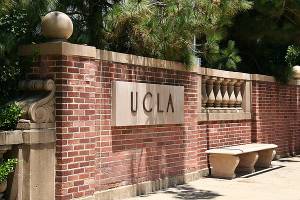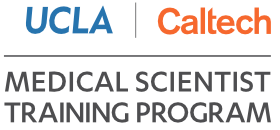 UCLA is among the youngest top-ranked universities in the country. Established in 1919, its mission is to foster undergraduate, graduate, and postgraduate scholarship, research, and public service. The hospital and medical clinics, libraries, laboratory facilities, and performing arts centers at UCLA all contribute to a vibrant community of students and faculty dedicated to these pursuits. As a young institution, UCLA is dynamic and forward-looking. The physical and intellectual growth at UCLA has been, and continues to be, exponential. Despite opening its doors just over 65 years ago, in 1955, the UCLA Hospital has been rated in the top five the country, and Best in the West for the past 20 years, by US News and World Report. This accomplishment exemplifies UCLA’s uncompromising determination, energy and commitment to excellence. From its inception, the medical center has promoted interactions between basic and clinical researchers. This collaborative, interdisciplinary culture is reflected in the architecture of the campus, with basic science research laboratories adjacent to medical clinics, life sciences adjacent to physical sciences, and all academic disciplines sharing a single, integrated campus. The tradition of bench to bedside research has further given rise to a number of buildings and facilities in which biologists, chemists, engineers and physicists work alongside clinicians to develop new, effective therapies. In addition to advances resulting in 14 Nobel Prizes in Chemistry, Physics, and Medicine, the election of 54 current faculty to the National Academy of Sciences, and the appointment of 22 current faculty as HHMI Investigators. UCLA researchers have played central roles in the development of positron emission tomography (PET) imaging technologies (Michael Phelps), and of the highly effective anticancer pharmaceuticals Herceptin (Dennis Slamon) and Gleevec (Owen Witte) . The recent establishment and growth of the interdisciplinary California NanoSystems Institute and the Eli and Edythe Broad Center of Regenerative Medicine and Stem Cell Research further exemplify UCLA’s commitment to innovation and collaboration.
UCLA is among the youngest top-ranked universities in the country. Established in 1919, its mission is to foster undergraduate, graduate, and postgraduate scholarship, research, and public service. The hospital and medical clinics, libraries, laboratory facilities, and performing arts centers at UCLA all contribute to a vibrant community of students and faculty dedicated to these pursuits. As a young institution, UCLA is dynamic and forward-looking. The physical and intellectual growth at UCLA has been, and continues to be, exponential. Despite opening its doors just over 65 years ago, in 1955, the UCLA Hospital has been rated in the top five the country, and Best in the West for the past 20 years, by US News and World Report. This accomplishment exemplifies UCLA’s uncompromising determination, energy and commitment to excellence. From its inception, the medical center has promoted interactions between basic and clinical researchers. This collaborative, interdisciplinary culture is reflected in the architecture of the campus, with basic science research laboratories adjacent to medical clinics, life sciences adjacent to physical sciences, and all academic disciplines sharing a single, integrated campus. The tradition of bench to bedside research has further given rise to a number of buildings and facilities in which biologists, chemists, engineers and physicists work alongside clinicians to develop new, effective therapies. In addition to advances resulting in 14 Nobel Prizes in Chemistry, Physics, and Medicine, the election of 54 current faculty to the National Academy of Sciences, and the appointment of 22 current faculty as HHMI Investigators. UCLA researchers have played central roles in the development of positron emission tomography (PET) imaging technologies (Michael Phelps), and of the highly effective anticancer pharmaceuticals Herceptin (Dennis Slamon) and Gleevec (Owen Witte) . The recent establishment and growth of the interdisciplinary California NanoSystems Institute and the Eli and Edythe Broad Center of Regenerative Medicine and Stem Cell Research further exemplify UCLA’s commitment to innovation and collaboration.
The NIH funded MSTP at UCLA was established in 1983. Since that time, 232 students have graduated from the program and 110 students are currently enrolled. The vast majority of alumni who have completed their postgraduate training are actively involved in biomedical research as physician-scientists at outstanding research institutions across the country. Our students have received their PhD degrees in traditional biomedical research fields, in engineering and chemistry, as well as in philosophy, history of medicine, anthropology, sociology and health policy through the social sciences track.
In 1997, an affiliation was formed with the California Institute of Technology (Caltech), which made it possible for an average of two students each year to perform their PhD thesis research at this world-renowned research institution. Founded in 1891, the mission of Caltech is to expand human knowledge and benefit society through research integrated with education. Located in Pasadena, 25 miles east of UCLA, Caltech has been home to 38 Nobel laureates, and has fostered fundamental discoveries including the discovery of the chemical bond by Linus Pauling in the 1930s, the discovery of the positron by Carl Anderson in 1934, and the discovery of quarks by Murray Gell-Man in the 1960s, along with central discoveries by Thomas Hunt Morgan, George Beadle and Max Delbruck from the 1930s through the 1960s that have formed the basis of much of modern molecular biology. Although the MSTP represented the first formal affiliation between UCLA and Caltech, the success of the combined UCLA-Caltech MSTP spearheaded and served as a model for several other joint efforts that benefit from the complementary strengths of the two institutions, including the Specialty Training and Advanced Research (STAR) fellowship program for physician-scientists, and the Institute for Molecular Medicine.

